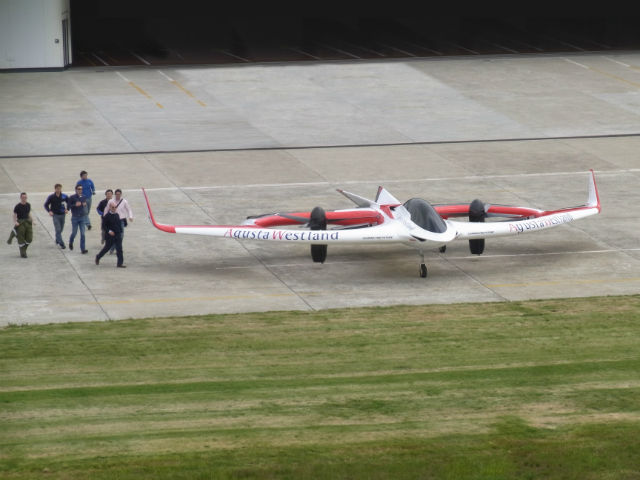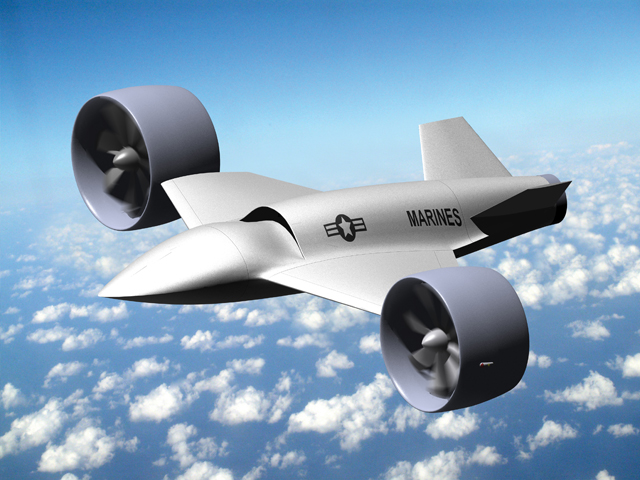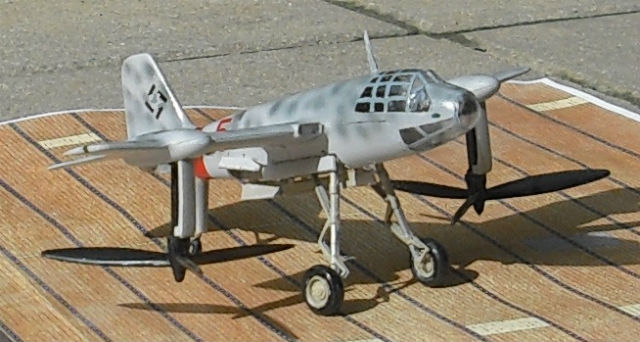It emerged at Moscow’s MAKS air show that Russian Helicopters is developing an unmanned tiltrotor concept. It is not the first time Russian industry has worked on the technology, which attempts to combine the vertical performance of a helicopter with the speed and range of a fixed-wing aircraft. A tiltrotor project – the Mi-30 – was launched in 1972 but died as the Soviet system collapsed in the early 1990s. The news prompted us to look at other notable tiltrotors – concepts, in-development aircraft and the only one that has actually gone into operation. Here is our top eight.
1. Bell Boeing V-22
The Osprey is the only in-service tiltrotor, flown by the US Marines and US Air Force. Launched in 1989 after the two US companies received a US Department of Defense development contract six years earlier, and first fielded in 2007, there are more than 200 of the Rolls-Royce AE 1107C-powered aircraft in operation. Earlier this year, Japan became the first overseas customer for the Osprey, with an order for five. The aircraft’s development history was marred by several fatal accidents.

V-22
Bell Helicopter
2. AgustaWestland AW609
Along with Italian partner Agusta, Bell was originally involved, too, with the AW609, a 275kt (509km/h) civil tiltrotor launched as the BA609 18 years ago. The aircraft first flew in 2003 but has endured a very long gestation. In 2011, AgustaWestland bought its partner out, renamed the aircraft the AW609 and began a major revamp of the design. Despite the delay in getting it into service, AgustaWestland estimates there is a global market for 450 tiltrotors, of which the AW609 is likely to be the only one in commercial service for some time.
Read our original technical description on the BA609 here.

AW609
AgustaWestland
3. Bell XV-15
Bell has been the pioneer of the tiltrotor concept, with designs such as the XV-3 in the 1950s. The US company’s XV-15 prototype – the forerunner of the V-22 and AW609 – made its debut at the Paris air show in 1981 and a second appearance in 1995, heralding the technologies Bell was determined to bring to market, if necessary with industrial partners.

XV-15
Bell Helicopter
4. AgustaWestland Project Zero
The Italian airframer may have come considerably later than Bell to the tiltrotor philosophy, but after acquiring the AW609 programme, it has affirmed its commitment with its Project Zero, a “technology incubator”, unveiled at the Paris air show in 2013. The all-electric, ducted fan tiltrotor flew several times that year and AgustaWestland research engineers said at the time they expected several of its features to make their way onto AgustaWestland products. For instance, the direct electric drive of the twin three-bladed rotors could enable electric tail rotors on AgustaWestland aircraft.

Project Zero
AgustaWestland
5. Curtiss-Wright X-19
The X-19 was one of several innovative rotorcraft being developed in the USA during the height of the Cold War in the 1960s. The US Air Force-directed programme used four tilting propellers on the tips of tandem fixed wings with, in the words of Flight International at the time, a new type of glass-reinforced-plastic-bladed propeller “optimised for aircraft in which the propeller axis is vertical in VTOL and horizontal during cruising flight”. Two prototypes were purchased by USAF in 1962, but the project was axed three years later after a fatal crash.

X-19
6. IAI Panther
The in-development Israeli Aerospace Industries Panther is an unmanned tiltrotor powered by three ultra-quiet electric motors and with a maximum take-off weight of 65kg (143lb) and an endurance of 6h. An automatic flight control system manages the transition from hovering take-off phase to forward flight mode and back. A 12kg Mini Panther, with 2h endurance, is also in progress.

Panther
Israel Aerospace Industries
7. American Dynamics AD-150
This Maryland-based company has been developing a tilt-duct propeller unmanned air vehicle for some years with funding from the US Naval Air Systems Command and the state of Maryland. A prototype was displayed at the Association for Unmanned Vehicle Systems International event in 2010. The aircraft has a maximum speed of 300kt and is in the same class as the General Atomics Aeronautical Systems Predator A.

AD-150
American Dynamics
8. Focke Achgelis Fa 269
Tiltrotors were one of many innovative military aviation technologies the Nazis hoped to exploit during the war. After pioneering helicopters such as the Fw 61 in the 1930s, Henrich Focke’s Focke-Achgelis was ordered by the Reich Air Ministry in 1941 to develop a single-seat fighter with the vertical take-off capability of a helicopter and the speed of a fixed-wing aircraft. Bombing raids in the last years of the war put paid to any attempt to fly a prototype and this model is all that remains of the concept.

Fa 269, model
Source: FlightGlobal.com






















